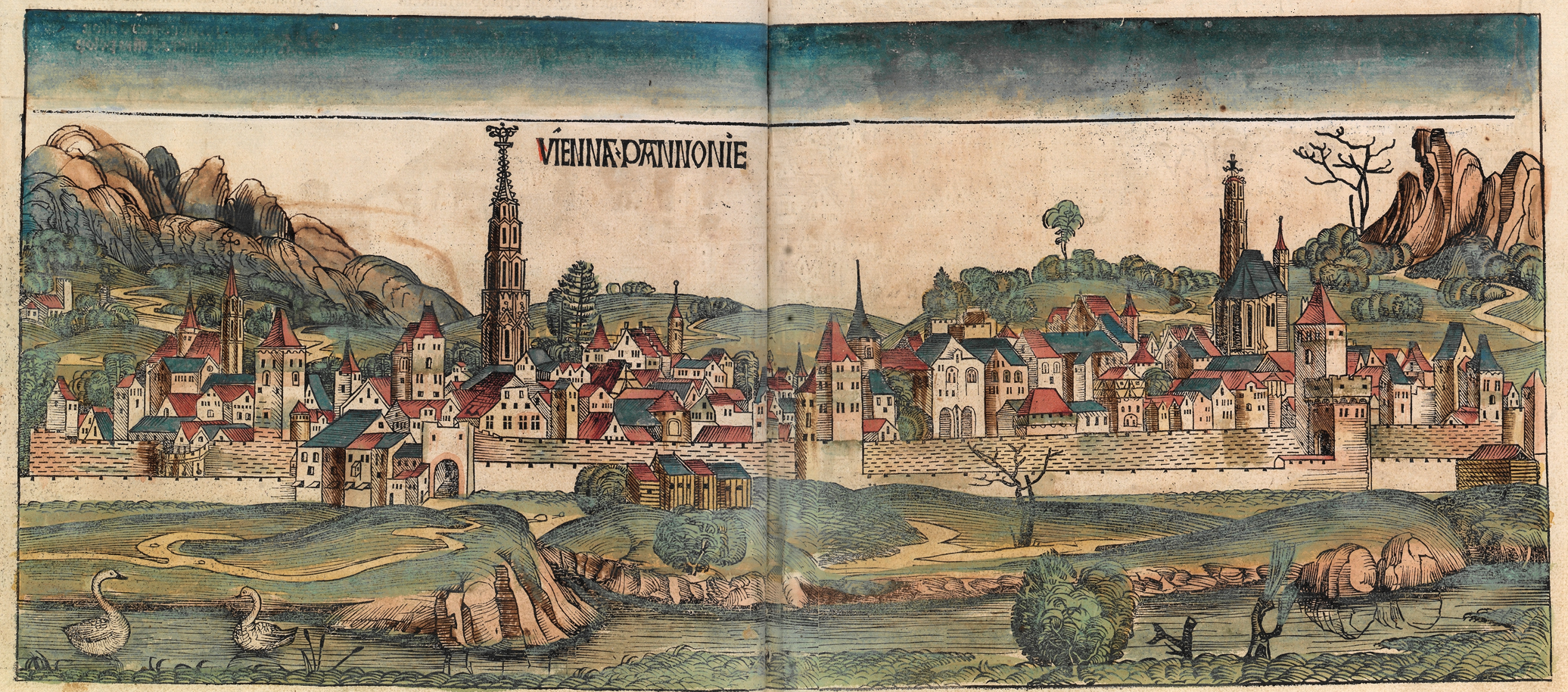|
Paenitentiale Bedae
The ''Paenitentiale Bedae'' (also known as the ''Paenitentiale Pseudo-Bedae'', or more commonly as either Bede's penitential or the Bedan penitential) is an early medieval penitential handbook composed around 730, possibly by the Anglo-Saxon monk Bede. Background Authorship Sources Manuscripts and transmission There are four extant manuscripts that contain the ''Paenitentiale Bedae'', all dating to the ninth century, ranging geographically from northeastern France to the Main river region. The sigla given below (W9, Z2, etc.) are those introduced by Reinhard Haggenmüller. Haggenmüller divided the four main surviving witnesses of the ''Paenitentiale Bedae'' into two groups, based broadly on the regions in which they were produced, the nature and arrangement of their accompanying texts, and shared readings in the ''Paenitentiale Bedae'' itself.:Haggenmüller, ''Überlieferung'', 129–49. the 'Rhine-Main river' group consists of the oldest manuscripts (W9 and Se1), while t ... [...More Info...] [...Related Items...] OR: [Wikipedia] [Google] [Baidu] [Amazon] |
Sélestat
Sélestat (; Alsatian language, Alsatian: ''Schlettstàdt''; German: ''Schlettstadt'') is a Communes of France, commune in the Grand Est region of France. An administrative division (Subprefectures in France, sous-préfecture) of the Bas-Rhin Departments of France, department, the town lies on the Ill (France), Ill river, from the Rhine and the German border. Sélestat is located between the largest communes of Alsace, Strasbourg and Mulhouse. In 2019, Sélestat had a total population of 19,242. The Humanist Library of Sélestat is located there. Name The present name of the town is a Frenchification of the original Germanic name. It appeared soon after the French conquest in the 17th century. The town is called ''Schlettstàdt'' () in Alsatian language, Alsatian and () in German. Sélestat was first mentioned in 727 as ''Sclastat''.. It was mentioned as ''Scalistati'' in 775, as ''Slectistat'' in 881, as ''Sclezistat'' in 884 and as ''Slezestat'' in 1095. The current German ... [...More Info...] [...Related Items...] OR: [Wikipedia] [Google] [Baidu] [Amazon] |
Excarpsus Cummeani
The ''Excarpsus Cummeani'', also called the ''Pseudo-Cummeani'', is an eighth-century penitential, probably written in the north of the Frankish Empire in Corbie Abbey. Twenty-six copies of the manuscript survive; six of those were copied before 800 CE. It is possible that the penitential, which extends its scope beyond monasticism to include clerics and lay people, has a connection to Saint Boniface and his efforts to reform the Frankish church in the first half of the eighth century. Geographic spread by the end of the eighth century and continued copying of the manuscript into the 9th and 10th centuries have been interpreted to mean the work was considered "by the Christian authorities" a canonical text. It was used as late as the eleventh century, "as the main source of the ''P. Parisiense compositum''. Genesis and authorship A penitential is a set of church rules concerning the Christian sacrament of penance; such sets were first developed by Celtic monks in Ireland in the s ... [...More Info...] [...Related Items...] OR: [Wikipedia] [Google] [Baidu] [Amazon] |
Penitentials
A penitential is a book or set of church rules concerning the Christian sacrament of penance, used for regular private confession with a confessor-priest, a "new manner of reconciliation with God" that was promoted by Celtic monks in Ireland in the sixth century AD, under the Egyptian monastic influence of St John Cassian. It consisted of a list of sins and the appropriate penances prescribed for them, and served as a type of manual for confessors. Origin The earliest important penitentials were those by the Irish abbots Cummean (who based his work on a sixth-century Celtic monastic text known as the ''Paenitentiale Ambrosianum'') and Columbanus, and the Archbishop of Canterbury, Theodore of Tarsus. Most later penitentials are based on theirs, rather than on earlier Roman texts. The number of Irish penitentials and their importance is cited as evidence of the particular strictness of the Irish spirituality of the seventh century. Walter J. Woods holds that "over time the peniten ... [...More Info...] [...Related Items...] OR: [Wikipedia] [Google] [Baidu] [Amazon] |
Saint-Hubert, Belgium
Saint-Hubert (; ) is a city and municipality of Wallonia located in the province of Luxembourg, Belgium. On 1 January 2007 the municipality, which covers 111.16 km2 (42.92 sq mi), had 5,737 inhabitants, giving a population density of 51.6 inhabitants per square kilometre. The municipality consists of the following districts: Arville, Awenne, Hatrival, Mirwart, Saint-Hubert, and Vesqueville. Other population centers include: Lorcy and Poix-Saint-Hubert. The town is named in commemoration of Saint Hubert of Liège, whose body was moved in 825 to the Benedictine Abbey of Andage, thereafter called Abbey of Saint-Hubert. Climate Gallery Belgique - Basilique de Saint-Hubert - 01.jpg, Basilica of Saint-Hubert Belgique - Basilique de Saint-Hubert - 02.jpg, Cenotaph of Hubert of Liège Hubert of Liège (Latinisation of names, Latinized: ''Hubertus'') ( 656 – 30 May 727 A.D.) was a Christian saint who became the first bishop of Liège in 708 A.D. He is a pa ... [...More Info...] [...Related Items...] OR: [Wikipedia] [Google] [Baidu] [Amazon] |
Paenitentiale Theodori
The ''Paenitentiale Theodori'' (also known as the ''Iudicia Theodori'' or ''Canones Theodori'') is an early medieval penitential handbook based on the judgements of Archbishop Theodore of Canterbury. It exists in multiple versions, the fullest and historically most important of which is the ''U'' or ''Discipulus Umbrensium'' version (hereafter the ''Paenitentiale Umbrense''), composed (probably) in Northumbria within approximately a decade or two after Theodore's death. Other early though far less popular versions are those known today as the ''Capitula Dacheriana'', the ''Canones Gregorii'', the ''Canones Basilienses'', and the ''Canones Cottoniani'', all of which were compiled before the ''Paenitentiale Umbrense'' probably in either Ireland and/or England during or shortly after Theodore's lifetime. Background It is generally accepted by scholars today that Theodore himself is not responsible for any of the penitential works ascribed to him. Rather, a certain associate of Theo ... [...More Info...] [...Related Items...] OR: [Wikipedia] [Google] [Baidu] [Amazon] |
Main (river)
The Main () is the longest tributary of the Rhine, one of the major List of rivers of Europe, European rivers. It rises as the White Main in the Fichtel Mountains of northeastern Bavaria and flows west through central Germany for to meet the Rhine below Rüsselsheim, Hesse. The cities of Mainz and Wiesbaden are close to the confluence. The largest cities on the Main are Frankfurt am Main, Offenbach am Main and Würzburg. It is the longest river lying entirely in Germany (if the Weser-Werra are considered separate). Geography The Main flows through the north and north-west of the States of Germany, state of Bavaria and then across southern Hesse; against the latter it demarcates a third state, Baden-Württemberg, east and west of Wertheim am Main, the northernmost town of that state. The upper end of its drainage basin, basin opposes that of the Danube where the watershed is recognised by natural biologists, sea salinity studies (and hydrology science more broadly) as the Eu ... [...More Info...] [...Related Items...] OR: [Wikipedia] [Google] [Baidu] [Amazon] |
Österreichische Nationalbibliothek
The Austrian National Library (, ) is the largest library in Austria, with more than 12 million items in its various collections. The library is located in the Neue Burg Wing of the Hofburg in center of Vienna. Since 2005, some of the collections have been relocated within the Baroque structure of the Palais Mollard-Clary. Founded by the Habsburgs, the library was originally called the Imperial Court Library (); the change to the current name occurred in 1920, following the end of the Habsburg Monarchy and the proclamation of the Austrian Republic. The library complex includes four museums, as well as multiple special collections and archives. Middle Ages The institution has its origin in the imperial library of the Middle Ages. During the Medieval period, the Austrian Duke Albert III (1349–1395) moved the books of the Viennese vaults into a library. Albert also arranged for important works from Latin to be translated into German. In the Hofburg, the treasure of Archduke ... [...More Info...] [...Related Items...] OR: [Wikipedia] [Google] [Baidu] [Amazon] |
Vienna
Vienna ( ; ; ) is the capital city, capital, List of largest cities in Austria, most populous city, and one of Federal states of Austria, nine federal states of Austria. It is Austria's primate city, with just over two million inhabitants. Its larger metropolitan area has a population of nearly 2.9 million, representing nearly one-third of the country's population. Vienna is the Culture of Austria, cultural, Economy of Austria, economic, and Politics of Austria, political center of the country, the List of cities in the European Union by population within city limits, fifth-largest city by population in the European Union, and the most-populous of the List of cities and towns on the river Danube, cities on the river Danube. The city lies on the eastern edge of the Vienna Woods (''Wienerwald''), the northeasternmost foothills of the Alps, that separate Vienna from the more western parts of Austria, at the transition to the Pannonian Basin. It sits on the Danube, and is ... [...More Info...] [...Related Items...] OR: [Wikipedia] [Google] [Baidu] [Amazon] |
Penitential Of Cummean
The ''Penitential of Cummean'' is an Irish penitential, presumably composed c. 650 by an Irish monk named Cummean (or Cominianus). It served as a type of handbook for confessors. Manuscripts Of the remaining manuscript versions, notable are Codex Vat. Pal. Lat. 485, written in the ninth century in Irish-influenced Lorsch Abbey (in modern-day Germany), and Codex Vat. 1349. Although Codex Vat. Pal. Lat. 485 was written in Lorsch, J. Zettinger believed that the book was compiled about the middle of the seventh century in either Scotland or Ireland.Mc Neill, J., ''Medieval Handbooks of Penance: A Translation of the Principal Libri Poenitentiales and Selections from Related Documents'', Chapter 1, “Early Irish Penitentials,”, ser: Records of Civilization Sources and Studies, no. 29 (Columbia University Press, New York, 1938) The precise identification of Cummean is fraught with difficulties. The prologue of Codex Vat. 1349 shows an ascription to “Cumianus Longus” (Cummean Fad ... [...More Info...] [...Related Items...] OR: [Wikipedia] [Google] [Baidu] [Amazon] |
Paenitentiale Ecgberhti
The ''Paenitentiale Ecgberhti'' (also known as the ''Paenitentiale Pseudo-Ecgberhti'', or more commonly as either Ecgberht's penitential or the Ecgberhtine penitential) is an early medieval penitential handbook composed around 740, possibly by Archbishop Ecgberht of York. This work should not be confused with the vernacular works known as the '' Old English Penitential'' (formerly the ''Paenitentiale Pseudo-Ecgberhti'') and the '' Scriftboc'' (formerly the ''Confessionale Pseudo-Ecgberhti''). Background Authorship Sources Manuscripts and Transmission There are eleven extant manuscripts that contain the ''Paenitentiale Ecgberhti'', dating from as early as the end of the eighth century to as late as the thirteenth, ranging geographically from southern Germany to Brittany to England. The sigla given below (V6, O1, etc.) are based on those established by the Körntgen–Kottje Editionsprojekt for the ''Corpus Christianorum, Series Latina'', vol. 156, a project whose goal is t ... [...More Info...] [...Related Items...] OR: [Wikipedia] [Google] [Baidu] [Amazon] |
Monkwearmouth–Jarrow Abbey
The Abbey Church of Saint Peter and Saint Paul, Monkwearmouth–Jarrow, known simply as Monkwearmouth–Jarrow Abbey (), was a Benedictine double monastery in the Kingdom of Northumbria, England. Its first house was St Peter's, Monkwearmouth, on the River Wear, founded in AD 674–5. It became a double house with the foundation of St Paul's, Jarrow, on the River Tyne in 684–5. Both Monkwearmouth (in modern-day Sunderland) and Jarrow are now in the metropolitan county of Tyne and Wear. The abbey became a centre of learning, producing one of the greatest Anglo-Saxon scholars, Bede. Both houses were sacked by Viking raiders and in the 9th century the abbey was abandoned. After the Norman Conquest of England in the 11th century there was a brief attempt to revive it. Early in the 14th century the two houses were refounded as cells of Durham Priory. In 1536 they were surrendered to the Crown and dissolved. Since the dissolution the two abbey churches have survived as the ... [...More Info...] [...Related Items...] OR: [Wikipedia] [Google] [Baidu] [Amazon] |





